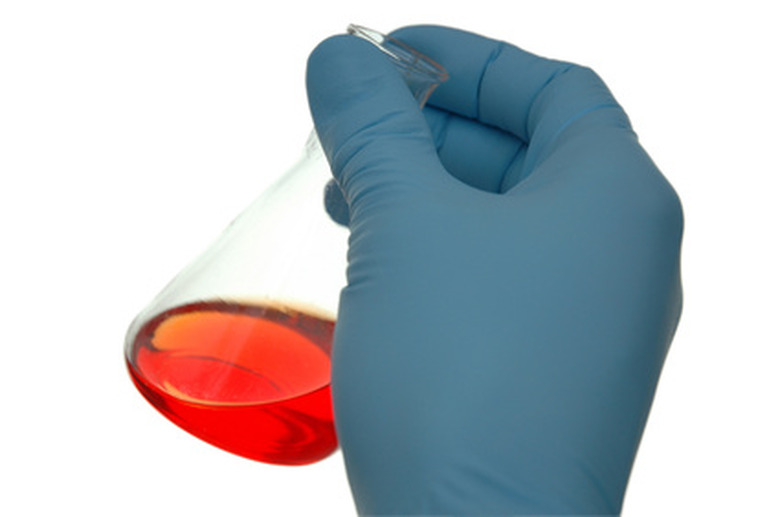What Is An Indicator For A Titration?
Learning about titrations makes up one of the rites of passage for beginning chemistry students. In a titration, you determine an unknown concentration of a sample by adding a second reactant of known concentration. In many titrations, you use a chemical called an indicator, which lets you know when the titration finishes.
Titration Endpoint
Titration Endpoint
As you begin to titrate a chemical solution, you know the identity of your chemical, but you don't know the concentration of your chemical. You figure this out by adding a second chemical of known concentration that will react with the first chemical. When the numbers of molecules in your reaction vessel exactly match up–you have no excess of either chemical–you have reached the endpoint of the titration. By noting the volume of the second chemical you used, you know the number of molecules of the second chemical you added. There should be an equal number of molecules of your first chemical. This information allows you to calculate the original concentration.
Function
Function
When you reach the endpoint of your titration, the indicator changes color. This happens because any unreacted molecules in excess of those needed to reach the endpoint reacts with the indicator molecules. This changes the structure of the indicator molecule so that its color changes.
Choice
Choice
Acid-base titrations often require color-changing indicators. In this titration type, an acidic solution reacts with a basic solution, and you don't know the concentration of one of them. The indicators for these titrations will change color at a certain point on the pH scale. For best results, choose an indicator whose color change takes place around the same pH you expect to see at the endpoint of the titration. You can predict the pH of the endpoint, and choose your indicator by drawing a graph of the pH of the reaction mixture vs. the volume of the second chemical added.
Naturally Occurring Indicators
Naturally Occurring Indicators
You can find pH indicators in the world around you. Any plant containing anthocyanins will change color depending on the acidity or basicity of its environment. If you treat a red cabbage leaf with a basic solution, for example, it will turn bluish-green. Some anthocyanin-containing flowers will produce different color petals depending on the acidity of the soil.
Considerations
Considerations
As with any reaction in the lab, extremes in temperature and pressure may cause your indicator to behave in an unpredictable way. Also be aware that pH indicators are an imprecise means of measuring solution pH. If you wish to get an exact pH reading, use a pH meter.
Cite This Article
MLA
Yool, Brooke. "What Is An Indicator For A Titration?" sciencing.com, https://www.sciencing.com/indicator-titration-6549531/. 24 April 2017.
APA
Yool, Brooke. (2017, April 24). What Is An Indicator For A Titration?. sciencing.com. Retrieved from https://www.sciencing.com/indicator-titration-6549531/
Chicago
Yool, Brooke. What Is An Indicator For A Titration? last modified August 30, 2022. https://www.sciencing.com/indicator-titration-6549531/
